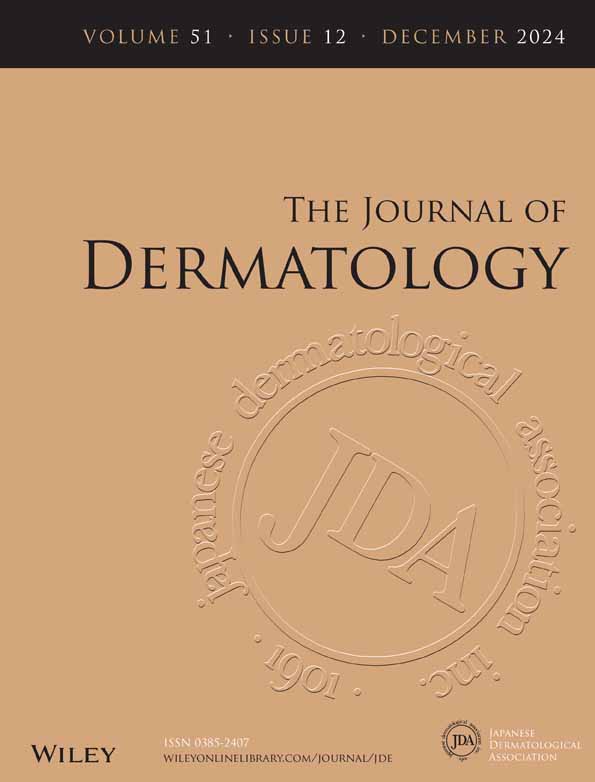Surface material analysis for human papillomavirus detection in nail Bowen's disease caused by HPV type 58
Abstract
Over the past few years, cases of human papillomavirus (HPV) infection in nail Bowen's disease have been reported. This disease presents diagnostic challenges due to its similarity to nail malignant melanoma, particularly with respect to the clinical manifestation of black nail streaks. While skin biopsy is usually employed for diagnosis, it is an invasive procedure. We report the case of a 52-year-old healthy Japanese male with a pigmented streak on the nail of the fourth finger of his right hand, which had extended from the central to the lateral nail fold within 4 months. Dermoscopic examination revealed a dark-brown pigmented band with splinter microhemorrhage. Clinically, nail Bowen's disease was suspected. The lesion was excised in strips under local anesthesia. Histopathological examination revealed hyperkeratosis, parakeratosis, papillomatosis, and dyskeratotic cells with atypical nuclei irregularly arranged. Immunohistochemistry using anti-HPV L1 antibody detected HPV-positive cells in the upper epidermis and stratum corneum of the nail matrix. Mucosal high-risk HPV type 58 DNA was detected from brush cytology of the keratotic surface prior to surgery, which was confirmed in formalin-fixed, paraffin-embedded excised samples using polymerase chain reaction (PCR) and subsequent direct DNA sequencing. Our case highlights HPV type 58 as a potential causative agent of nail Bowen's disease and shows that brush cytology of the surface material prior to excision may be a useful and less invasive way for mucosal high-risk HPV detection. PCR analysis of the nail surface could serve as a supplementary diagnostic tool for nail Bowen's disease.
CONFLICT OF INTEREST STATEMENT
The authors declare no conflict of interest for this article.




